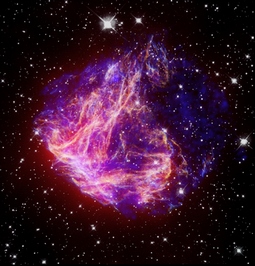Aurora is on version 2.5.0 C#, available at the Aurora Forums.
Contact Erik on the forum for a wiki account.
Difference between revisions of "Survey"
| Line 5: | Line 5: | ||
Before you can start [[mining]] other [[bodies]] (planets, asteroids or comets), you have to complete a geological survey first. Surveying a body requires a vessel equipped with [[Geological Survey Sensors]]. An estimated 5% of all bodies contain [[mineral]]s. | Before you can start [[mining]] other [[bodies]] (planets, asteroids or comets), you have to complete a geological survey first. Surveying a body requires a vessel equipped with [[Geological Survey Sensors]]. An estimated 5% of all bodies contain [[mineral]]s. | ||
| − | + | There are several ways to find out which bodies have been surveyed and what has been found: | |
| + | * selecting "Show Surveyed Bodies" from the Minerals tab in the system map window. Here you can also see how much mineral reserves have been found, and their accessibility (i.e. possible mining rate). | ||
| + | * going to the System View window (F9): the first column shows either nothing (not surveyed yet), an "S" (surveyed but nothing found) or "M" (minerals present). | ||
| + | * the [[Geological Survey Report]] window provides a search function for minerals you've discovered. | ||
| + | Finallly, the Summary tab of the Population & Production window tells you whether a geo-team search on the colony has been completed yet. | ||
You will be notified when a system has been completely surveyed. Note that this is only a search from orbit. You can then send in a [[Teams|Geological Survey team]] of leaders with survey skills to look for mineral deposits the ships may have missed. The orbital search has be completed first, though. | You will be notified when a system has been completely surveyed. Note that this is only a search from orbit. You can then send in a [[Teams|Geological Survey team]] of leaders with survey skills to look for mineral deposits the ships may have missed. The orbital search has be completed first, though. | ||
Revision as of 21:21, 6 April 2016
Survey missions are used to find Jump Points and Minerals. They are conducted by survey vessels equipped with specialized components capable of exploring system Gravitational anomalies and/or the Geological makeup of system bodies.
Geological Survey
Before you can start mining other bodies (planets, asteroids or comets), you have to complete a geological survey first. Surveying a body requires a vessel equipped with Geological Survey Sensors. An estimated 5% of all bodies contain minerals.
There are several ways to find out which bodies have been surveyed and what has been found:
- selecting "Show Surveyed Bodies" from the Minerals tab in the system map window. Here you can also see how much mineral reserves have been found, and their accessibility (i.e. possible mining rate).
- going to the System View window (F9): the first column shows either nothing (not surveyed yet), an "S" (surveyed but nothing found) or "M" (minerals present).
- the Geological Survey Report window provides a search function for minerals you've discovered.
Finallly, the Summary tab of the Population & Production window tells you whether a geo-team search on the colony has been completed yet.
You will be notified when a system has been completely surveyed. Note that this is only a search from orbit. You can then send in a Geological Survey team of leaders with survey skills to look for mineral deposits the ships may have missed. The orbital search has be completed first, though.
The quality of the geo-sensor (normal, improved, advanced) and the skill of the team affect only the time required, not the chance of finding minerals. You can't get more than two chances of discovering minerals - one for the orbital search, one for the team.
Gravitational Survey
Before you can explore new systems, or find new routes between existing ones, you first need to find the Jump Points connecting them. Surveying a system requires a vessels equipped with Gravitational Survey Sensors.
You can see the surveyed and unsurveyed Survey Locations in a system by selecting "Show JP Survey Locations" from the Display tab in the System Map window. You will be notified when a system has been completely surveyed.
Default Survey Orders
On the second tab of the Task Groups window you'll find "Default Orders". Select "Survey Next Location" for grav survey, or "Survey Next Planet" (or moon, or asteroid, depending on what you want) for geo survey. These orders will be carried out whenever there's nothing else in the orders list. You will be noticed when the ships have surveyed all locations which fit their orders.
If you use "Survey Next 5 Bodies", instead of "Survey Next Body", they will survey multiple bodies per time increment. The five survey orders are created at once, just as if you had done them manually.
If you use "Survey Next 3 Locations", the gravitational survey ships will queue three locations instead of one resulting in slightly less micromanagement.
